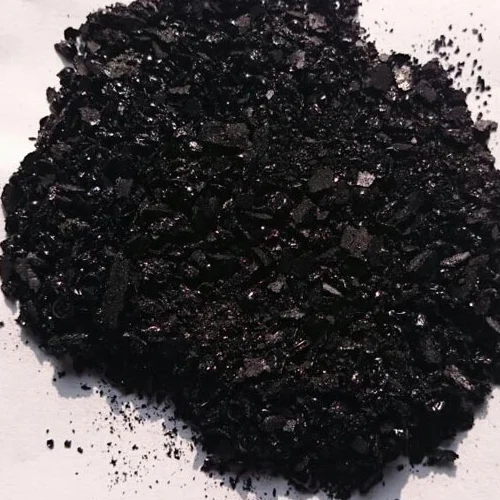Exploring the Range of Sulfur-Based Dyes for Textile Applications and Innovations
The Role of Sulfur Dyes in Textile Industry
Sulfur dyes, a class of synthetic dyes known for their affinity to cellulose fibers, have carved a significant niche in the textile industry. These dyes are particularly valued for their unique properties, which include excellent wash, light, and rub fastness, making them an indispensable choice for dyeing cotton and other cellulosic materials.
Understanding Sulfur Dyes
Sulfur dyes are complex organic compounds that undergo a chemical reduction process to become soluble in an alkaline dye bath. Once they penetrate the fibers, they oxidize back to their original form, resulting in vibrant and enduring colors. The chemical structure of sulfur dyes allows them to provide a wide range of hues, from brilliant shades to deep, rich colors, catering to the diverse needs of textile manufacturers.
One notable feature of sulfur dyes is their high resistance to fading, even when subjected to extreme environmental conditions such as sunlight and washing. This characteristic makes them an attractive option for products intended for outdoor use, such as workwear, uniforms, and upholstery fabrics. Furthermore, sulfur dyes are often more economical compared to other dyeing options, which adds to their appeal in a cost-sensitive industry.
Environmental Considerations
While sulfur dyes have many advantages, their production and application can raise environmental concerns. The manufacturing process may involve hazardous chemicals, releasing by-products that could pose risks to both human health and the environment. However, recent advancements in dye technology have led to the development of more eco-friendly sulfur dyes. These innovations aim to reduce harmful substances and improve the overall sustainability of the dyeing process.
sulfur dyes products

Several manufacturers are now focusing on the use of biodegradable additives and optimizing processes to mitigate environmental impacts. The shift towards sustainability is not just a trend; it reflects a growing awareness of the environmental footprint of textile production. Brands are increasingly adopting eco-friendly practices, including utilizing low-impact dyes and implementing closed-loop systems to recycle water and chemicals used during the dyeing process.
Application in the Market
The applications of sulfur dyes extend beyond traditional textile dyeing. Due to their durability and cost-effectiveness, they are used in various markets including automotive textiles, outdoor gear, and even heavy-duty workwear. The ability to produce dark colors without incurring significant extra costs makes sulfur dyes particularly appealing for mass production.
Moreover, as fashion trends evolve, the demand for eco-friendly and sustainable dyes escalates. Consumers are becoming more aware of the environmental impact of their purchases, pushing manufacturers to explore sustainable dyeing options, including the resurgence of interest in sulfur dyes modified to meet eco-friendly standards.
Conclusion
In summary, sulfur dyes occupy a pivotal role within the textile industry, merging functionality with economic advantages while adapting to contemporary environmental challenges. As the demand for sustainable practices grows, the development of safer and more eco-friendly sulfur dyeing methods presents a promising future for these dyes. By balancing quality with environmental responsibility, the industry can ensure that sulfur dyes continue to meet the evolving needs of consumers, contributing to a more sustainable textile landscape.
As we advance into an era where sustainability becomes paramount, the evolution of sulfur dyes and their applications will play a crucial role in shaping the future of textile dyeing. Their durability, cost-effectiveness, and versatility will ensure they remain a favored choice among manufacturers and consumers alike.
-
The Timeless Art of Denim Indigo Dye
NewsJul.01,2025
-
The Rise of Sulfur Dyed Denim
NewsJul.01,2025
-
The Rich Revival of the Best Indigo Dye
NewsJul.01,2025
-
The Enduring Strength of Sulphur Black
NewsJul.01,2025
-
The Ancient Art of Chinese Indigo Dye
NewsJul.01,2025
-
Industry Power of Indigo
NewsJul.01,2025
-
Black Sulfur is Leading the Next Wave
NewsJul.01,2025

Sulphur Black
1.Name: sulphur black; Sulfur Black; Sulphur Black 1;
2.Structure formula:
3.Molecule formula: C6H4N2O5
4.CAS No.: 1326-82-5
5.HS code: 32041911
6.Product specification:Appearance:black phosphorus flakes; black liquid

Bromo Indigo; Vat Bromo-Indigo; C.I.Vat Blue 5
1.Name: Bromo indigo; Vat bromo-indigo; C.I.Vat blue 5;
2.Structure formula:
3.Molecule formula: C16H6Br4N2O2
4.CAS No.: 2475-31-2
5.HS code: 3204151000 6.Major usage and instruction: Be mainly used to dye cotton fabrics.

Indigo Blue Vat Blue
1.Name: indigo blue,vat blue 1,
2.Structure formula:
3.Molecule formula: C16H10N2O2
4.. CAS No.: 482-89-3
5.Molecule weight: 262.62
6.HS code: 3204151000
7.Major usage and instruction: Be mainly used to dye cotton fabrics.

